Whether it is turning forests into cropland or savannah into pastures, people have repurposed land over the past 60 years equivalent in area to Africa and Europe combined, researchers said on Tuesday.
Counting all such transitions since 1960, it adds up to about 43 million square kilometers, four times more than previous estimates, a study in Nature Communications said.
“Since land use plays a central role for climate mitigation, biodiversity and food production, understanding its full dynamics is essential for sustainable land use strategies,” said lead author Karina Winkler, a physical geographer at Wageningen University & Research in the Netherlands.
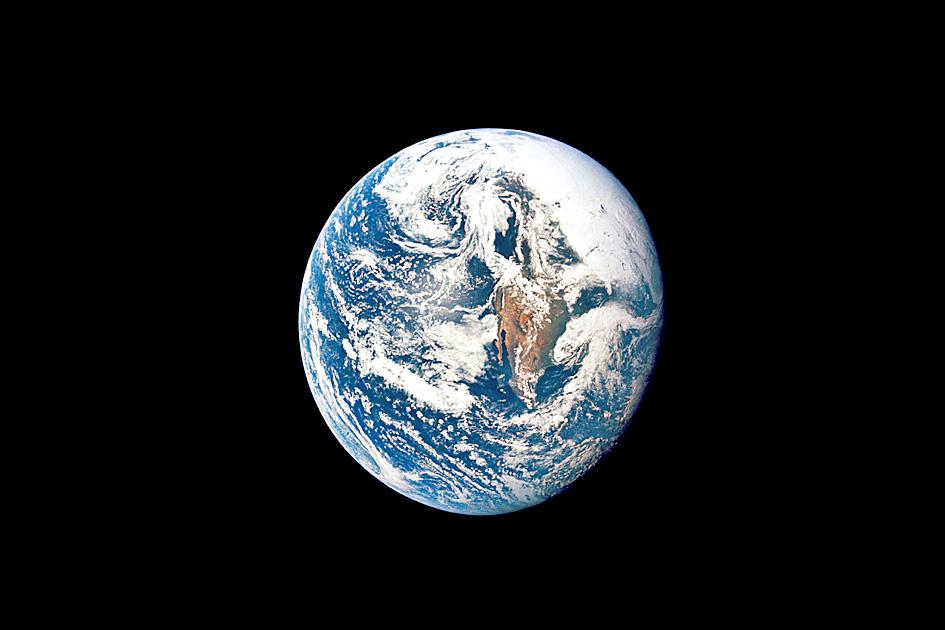
Photo: AP
Plants and soil — especially in tropical forests — soak up about 30 percent of anthropogenic carbon pollution, so large-scale landscape changes could spell success or failure in meeting Paris Agreement temperature targets.
The 2015 climate treaty enjoins nations to stop global heating at “well below” 2°C, and 1.5°C if possible.
Since 1960, Earth’s total forest cover has shrunk by nearly 1 million square kilometers, while areas covered by cropland and pastures have each increased by roughly the same extent, the study found.
However, the global figures obscure important regional differences.
Forest areas in the global north — Europe, Russia, East Asia and North America — have increased in the past 60 years, while forest loss in developing countries of the global south has been staggeringly high, the study showed.
Conversely, croplands have declined in the north and expanded in the south.
“Tropical deforestation has occurred for the production of beef, sugar cane and soybean in the Brazilian Amazon, oil palm in Southeast Asia, and cocoa in Nigeria and Cameroon,” Winkler said.
High oil prices — peaking at about US$145 per barrel of crude in 2008 — also fueled conversion of forests to bioenergy crops.
The study said that there has been rapid land use change — driven first by the green revolution in the 1960s and 1970s, and then by the expansion of globalized markets — up to 2005.
After a period of fluctuation in global markets, the pace at which land was repurposed slowed, it said.
“With the economic boom coming to an end during the Great Recession [of 2008], the global demand for commodities dropped,” the study said.
Earlier calculations of land use change since the middle of the 20th century have fallen short for a number of reasons, Winkler said.
Datasets were fragmented in space and time, and based as much on assumptions as concrete measurements, the study said.
The resolution of satellite data was coarse, and usually only distinguished between two or three categories of land, it said.
The study drew from long-term land use statistics compiled by the UN Food and Agriculture Organization, identifying urban areas, croplands, forests, grasslands, pastures and regions with sparse or no vegetation, such as deserts.
It also used a higher resolution of satellite images — 1 square kilometer.
About 17 percent of Earth’s land surface has switched categories at least once since 1960, the study showed, although sometimes the same piece of real estate changed more than once.
If all such transitions are taken into account, the total land surface affected was equivalent to 32 percent.
The Earth’s surface area is about 510 million square kilometers, about 70 percent of it water, mostly oceans. Of the remaining 149 million square kilometers, about 15 million square kilometers is permanently covered by ice, leaving 134 million square kilometers of ice-free land.
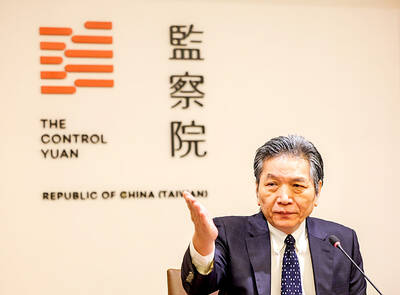
‘ABUSE OF POWER’: Lee Chun-yi allegedly used a Control Yuan vehicle to transport his dog to a pet grooming salon and take his wife to restaurants, media reports said Control Yuan Secretary-General Lee Chun-yi (李俊俋) resigned on Sunday night, admitting that he had misused a government vehicle, as reported by the media. Control Yuan Vice President Lee Hung-chun (李鴻鈞) yesterday apologized to the public over the issue. The watchdog body would follow up on similar accusations made by the Chinese Nationalist Party (KMT) and would investigate the alleged misuse of government vehicles by three other Control Yuan members: Su Li-chiung (蘇麗瓊), Lin Yu-jung (林郁容) and Wang Jung-chang (王榮璋), Lee Hung-chun said. Lee Chun-yi in a statement apologized for using a Control Yuan vehicle to transport his dog to a
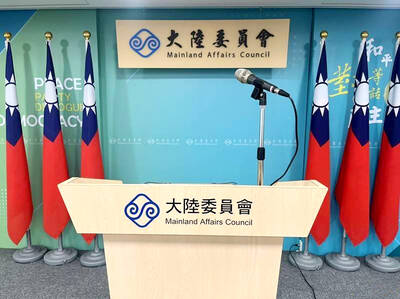
BEIJING’S ‘PAWN’: ‘We, as Chinese, should never forget our roots, history, culture,’ Want Want Holdings general manager Tsai Wang-ting said at a summit in China The Mainland Affairs Council (MAC) yesterday condemned Want Want China Times Media Group (旺旺中時媒體集團) for making comments at the Cross-Strait Chinese Culture Summit that it said have damaged Taiwan’s sovereignty, adding that it would investigate if the group had colluded with China in the matter and contravened cross-strait regulations. The council issued a statement after Want Want Holdings (旺旺集團有限公司) general manager Tsai Wang-ting (蔡旺庭), the third son of the group’s founder, Tsai Eng-meng (蔡衍明), said at the summit last week that the group originated in “Chinese Taiwan,” and has developed and prospered in “the motherland.” “We, as Chinese, should never
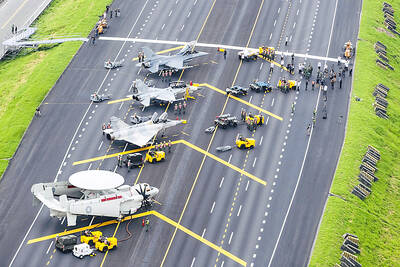
‘A SURVIVAL QUESTION’: US officials have been urging the opposition KMT and TPP not to block defense spending, especially the special defense budget, an official said The US plans to ramp up weapons sales to Taiwan to a level exceeding US President Donald Trump’s first term as part of an effort to deter China as it intensifies military pressure on the nation, two US officials said on condition of anonymity. If US arms sales do accelerate, it could ease worries about the extent of Trump’s commitment to Taiwan. It would also add new friction to the tense US-China relationship. The officials said they expect US approvals for weapons sales to Taiwan over the next four years to surpass those in Trump’s first term, with one of them saying
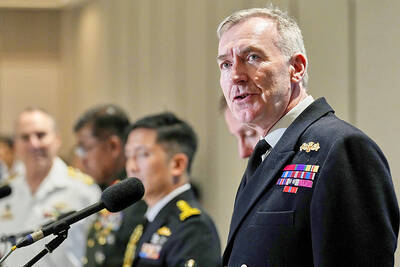
INDO-PACIFIC REGION: Royal Navy ships exercise the right of freedom of navigation, including in the Taiwan Strait and South China Sea, the UK’s Tony Radakin told a summit Freedom of navigation in the Indo-Pacific region is as important as it is in the English Channel, British Chief of the Defence Staff Admiral Tony Radakin said at a summit in Singapore on Saturday. The remark came as the British Royal Navy’s flagship aircraft carrier, the HMS Prince of Wales, is on an eight-month deployment to the Indo-Pacific region as head of an international carrier strike group. “Upholding the UN Convention on the Law of the Sea, and with it, the principles of the freedom of navigation, in this part of the world matters to us just as it matters in the